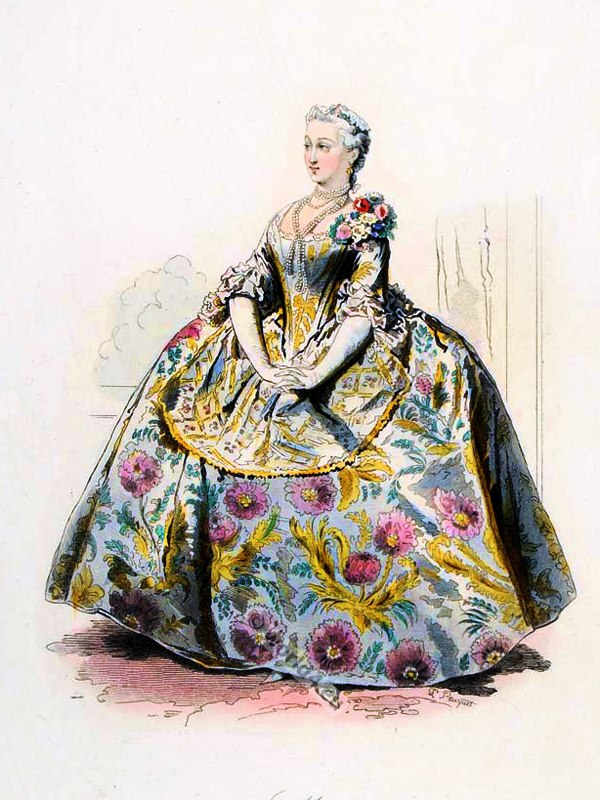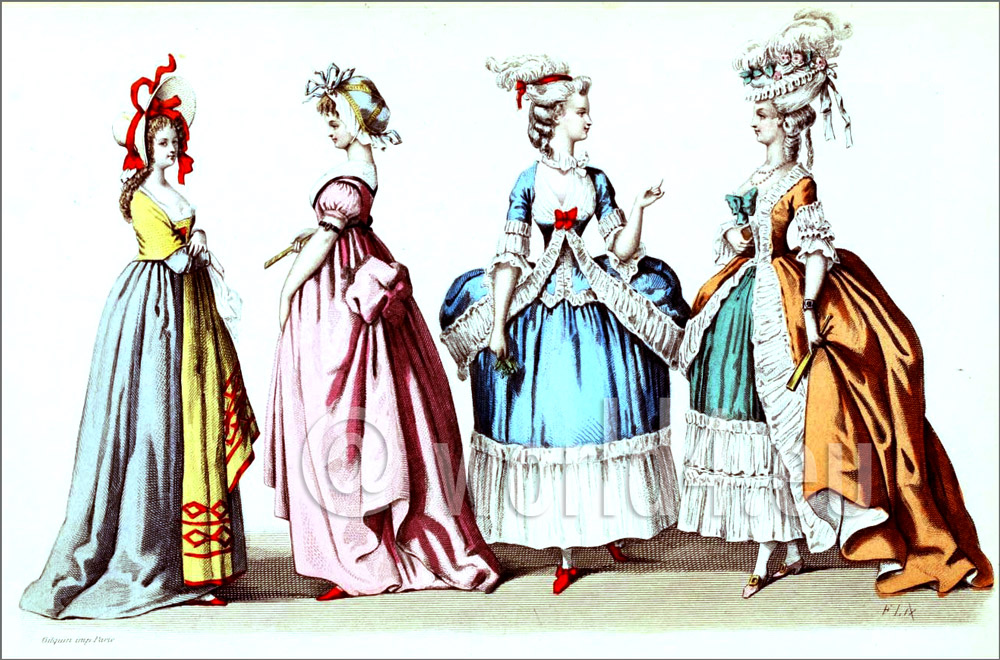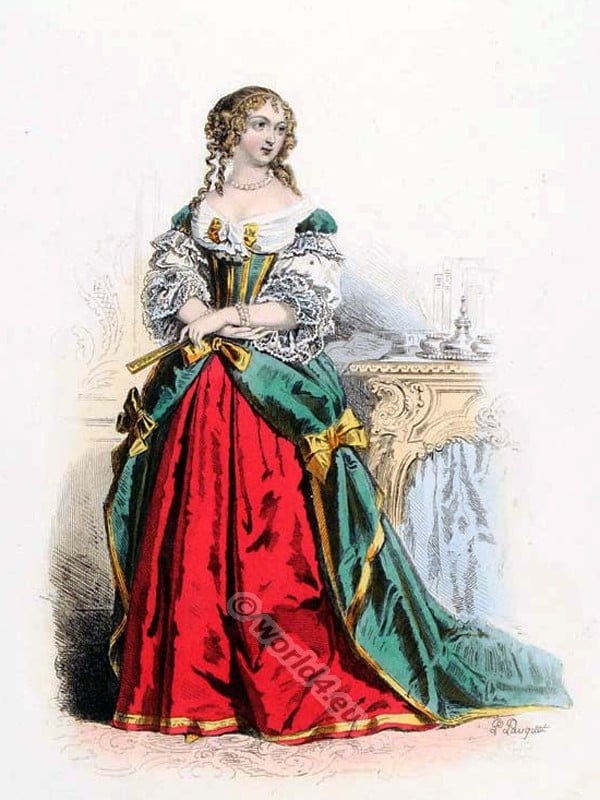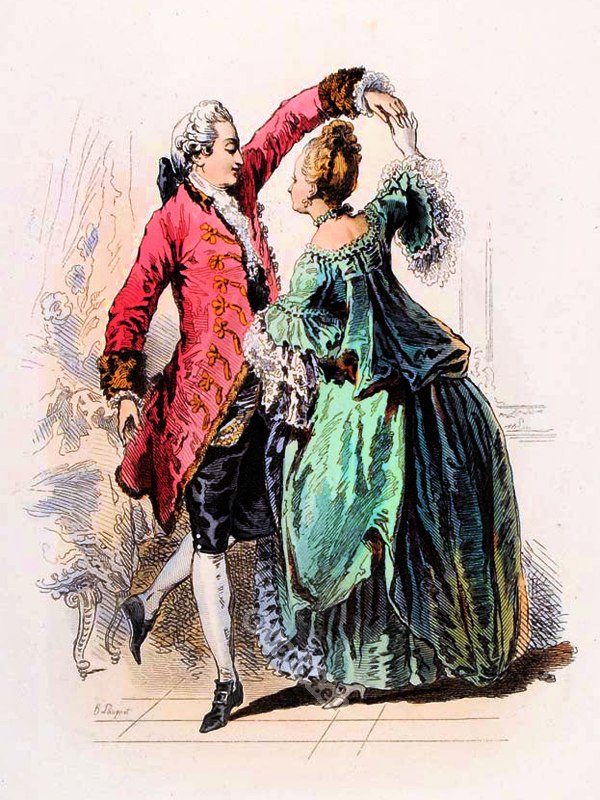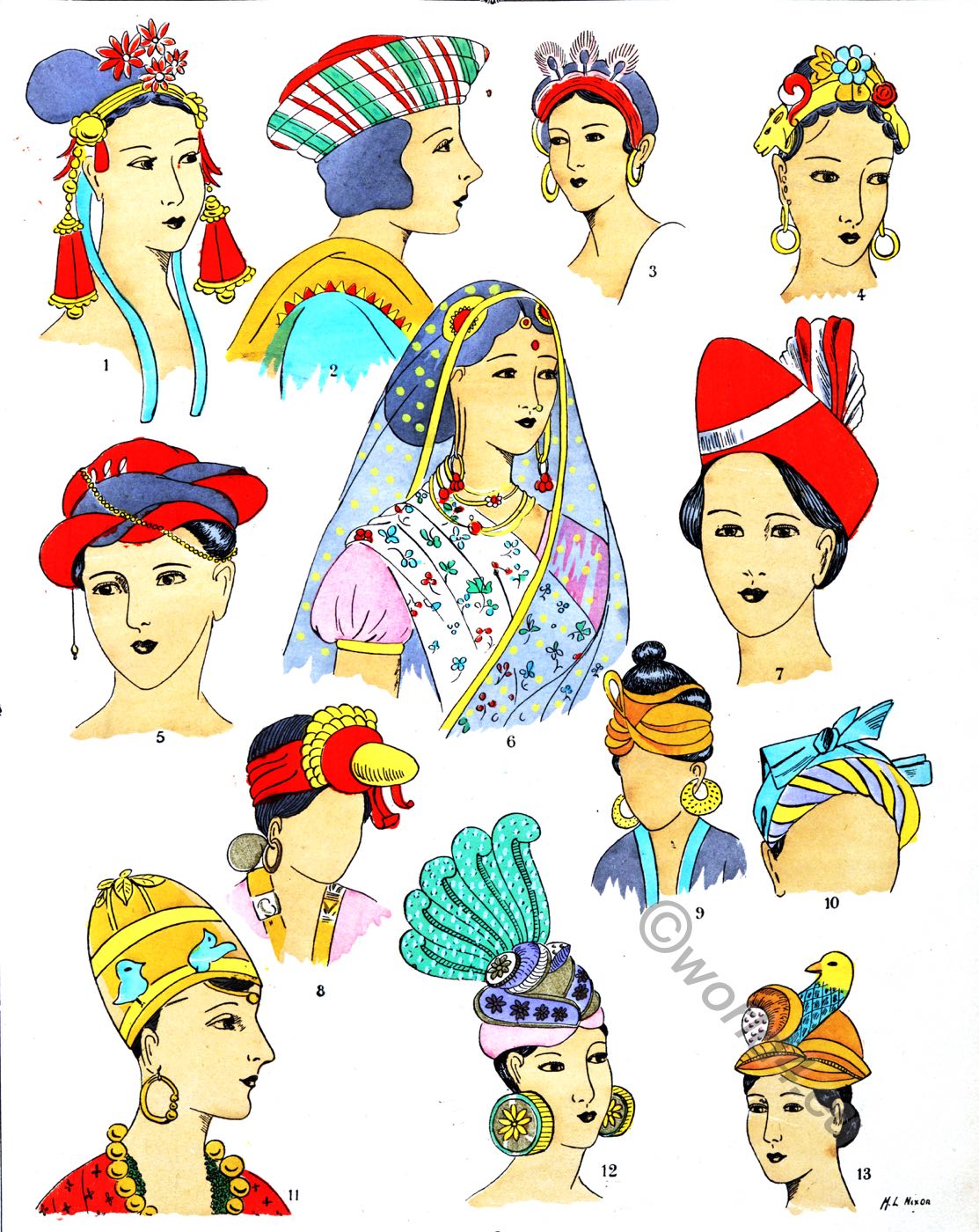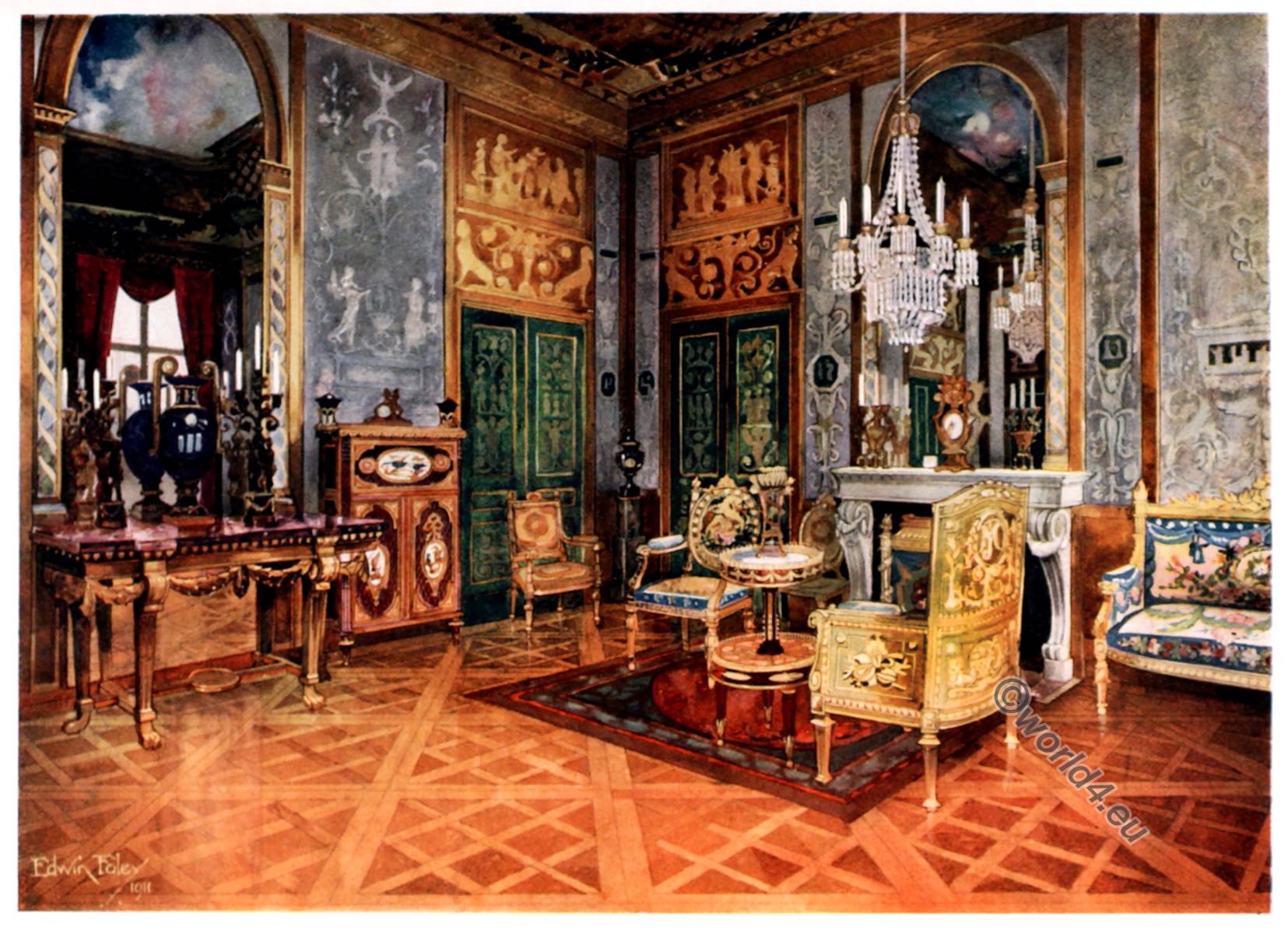
FRANCE. XVIII. CENTURY FASHIONS FROM THE SECOND HALF OF THE GOVERNMENT OF LOUIS XVI.
HAIRSTYLES. – HATS AND CAPS. THE DESHABILLÉS.
No. 1 – Hairstyle à la Chartres; variation of the Hérisson hairstyle.
No. 2. – The Gabrielle de Vergy *). Variation of the Mongolfière.
No. 3 – Ball costume 1788: skirt a l’espagnole, bodice in rose-coloured satin, sleeves a soufflets, bonnet à l’espagnole in green satin, covered with a pink ribbon forming a large bow at the front and decorated with a bush of large white feathers with purple edges at the sides. Hairdo of loose curls, falling freely at the back, held together by a steel hair hanger. Shoe with a bent up lace en sabot-chinois.
No. 4 – Winter promenade costume 1788. Dressing gown of scarlet cloth, garnished with martens and gilded copper buttons. Waist and skirt of similarly garnished white satin. Two clock pockets with watches, chains and breloques. Scarf in muslin knotted in a bow. Big marten cuff. The hat in white satin, the brim trimmed with marten and turned upside down à l’espagnole, with two large blue ribbon bows at the sides. Coiffure of free curls, gathered in a chignon at the back.
Nr. 5. – Coiffure à la candeur.
Nr. 6. – Coiffure à la zodiacale.
Nr. 7. – Bonnet à la Théodore.
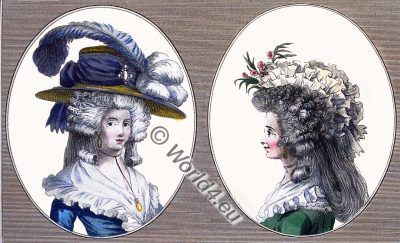
*) Gabrielle de Vergy is a tragedy in 5 acts and verses by Pierre Laurent Buirette de Belloy, written in 1770 and performed in 1773. The story is inspired by the medieval novels of Châtelain de Coucy and the Lady of Fayel, as well as that of Châtelaine de Vergy. The tragedy of Pierre Laurent Buirette de Belloy was the inspiration for the libretto of the Italian opera Gabriella di Vergy, written by Andrea Leone Tottola and set to music by Gaetano Donizetti.
The opera, composed in 1826 and revised but not performed in 1838, was first performed in a completely revised posthumous version under the title Gabriella on 29 November 1869 at the Teatro San Carlo in Naples. The version revised by Donizetti in 1838 was first performed in Belfast on 9 November 1978. Plot: A knight named Raoul de Coucy instructs his squire, before dying in the Holy Land, to bring his heart to the woman he loves, Gabrielle de Vergy, wife of the Count of Faiel, after his death. However, the squire is surprised by her husband while carrying out his mission. In revenge, the Count of Faiel lets his unsuspecting wife eat his heart as a meal prepared for her. When she learns the truth, she swears to stop eating and starves to death.
No. 8. – Hat à la tartare.
No. 9 – hat à l’Anglomane.
No. 10. Hat à la tartar.
No. 11. – Femme du jour in a bodice à la Pierrot with a skirt of mottled taffeta covered by a dotted tab at the back.
No. 12. – Coiffure du printemps.
No. 13. – Hat “in new taste”.
No. 14. – Hat du héron.
No. 15. – Hat au Palais-Royal.
No. 16. – Hairdo herisson.
No. 17. – Herisson. With three separate curls.
No. 18. – Hairdo “in new taste”. Puff with comb-like frill.
No. 19. – Hat à la duchesse, made of blue taffet drawn over tin, with wide brim. Wide white ribbon, with large knotted bow at the side. The head of the hat is surrounded at the top by puffs of white gauze and topped by a wreath of large white feathers.
No. 20. – The puff with four little curls à la chancelière.
No. 21. – Coiffure au Colisée, surmounted by a new pouffe.
No. 22. – Bonnet à la fusée.
The high hairstyles introduced by Marie-Antoinette remained in use throughout her reign; but since 1786, the large toilet to which the high hairstyle was worn appears only on exceptional festive occasions, at state ceremonies, formal dinners, etc.
If one wants to find one’s way among the changing fashions of the day, the names of the hair and headdresses offer a pretty safe guide. The French-English alliance, new plays like Beaumarchais’ Tarare, provided the name for hats. Sometimes a new hairstyle is named after its first wearer, “la frisure à la Chartres”, or one simply says: a hat, a hairstyle with a new taste.
Often the same names denote completely different fashions; for example, the hat en hérisson of 1788 has only one thing in common with the Coiffure en hérisson: the two enclosing ribbon loop. Simple events of the day that have not passed into history are sometimes reflected in the names of the hairstyles. In 1789, for example, people wore a hat au báteau-renversé, perhaps an allusion to a ship collision.
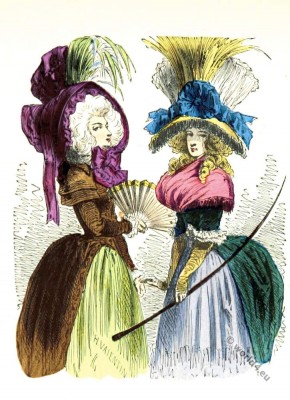
In general, in 1787 and 1788, people wore more hats than bonnets, while later the opposite relationship emerged.
Reproductions after the original fashion pictures.
Cf. the text: Mercier, Tableau de Paris. – Le Cabinet des modes 1785 1789. – De Goncourt, La femme au dix-huitième siècle.
Source: History of the costume in chronological development by Auguste Racinet. Edited by Adolf Rosenberg. Berlin 1888.
Continuing
Discover more from World4 Costume Culture History
Subscribe to get the latest posts sent to your email.

